Cannondale has come a long way since its foundation in 1970. If Wikipedia (the source of all lazy journalism knowledge) is to be believed, before settling on bikes the company went from pre-cast concrete housing, though ammonia fuelled internal combustion engines, air conditioners and bicycle trailers before the first bike in 1984. It helped to kick start a trend though – aluminium was the high end niche material for many years, strange as it seems now, and that was in no small part thanks to the immensely desirable machinery that the Connecticut company produced after its push into two-wheeled contraptions.
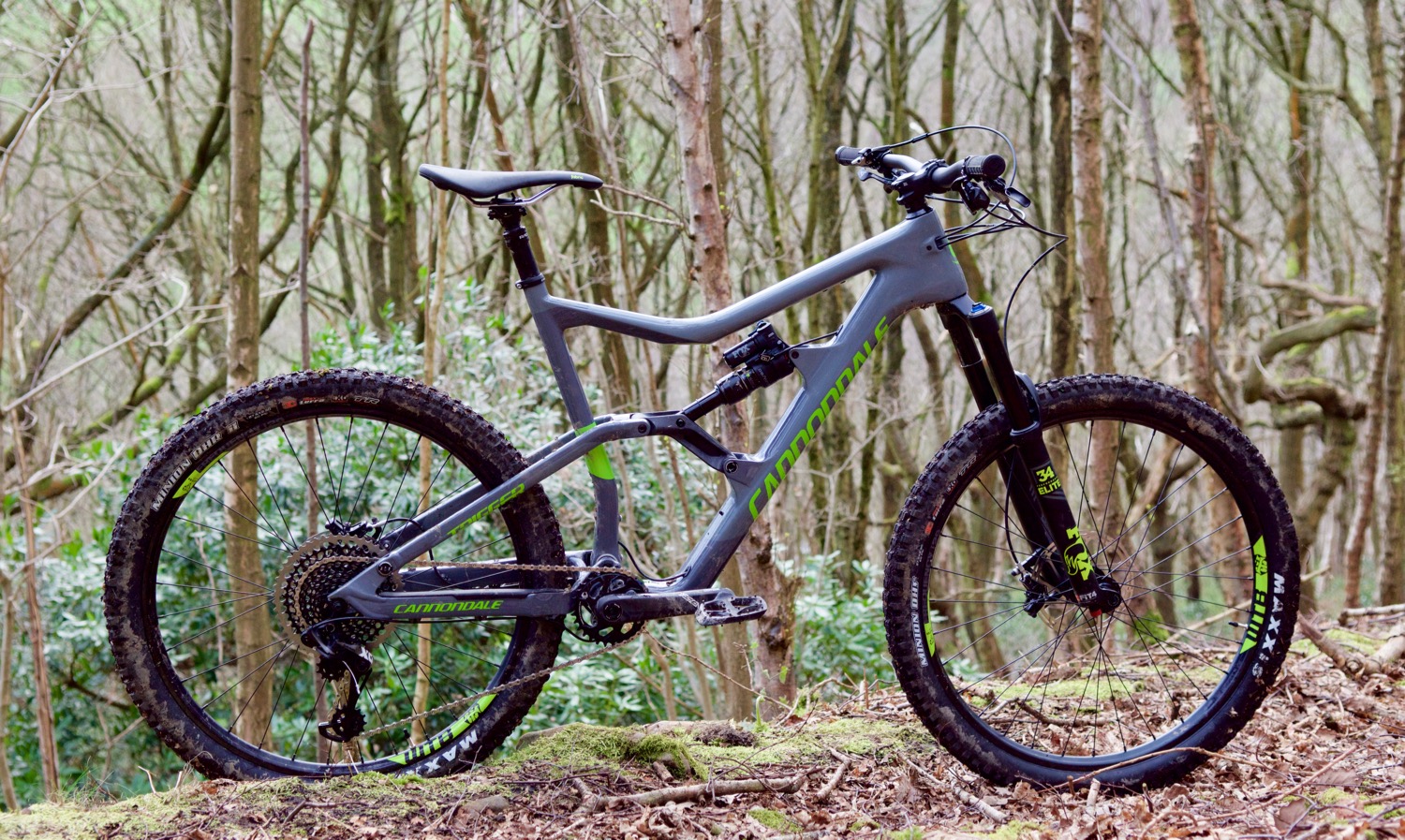
The Trigger always strove to be two bikes in one. The previous iteration had 140mm of travel at both ends, but a press of a handlebar switch changed the gubbins (technical term) inside the Fox DYAD pull shock to lower the rear travel to a mere 85mm; much better for climbing, it was thought.
Well, it’s all change for the 2018 model year (how did that happen?) Trigger. There’s a complete aesthetic redesign, some substantial changes in many (if not all) of the important geometry numbers and some changes to a pile of other things as well. I’m not going to pull the old ‘not evolution but revolution’ trope, as it’s tired, and we’re much more original than that, but… actually, I just did, didn’t I? Ah well…
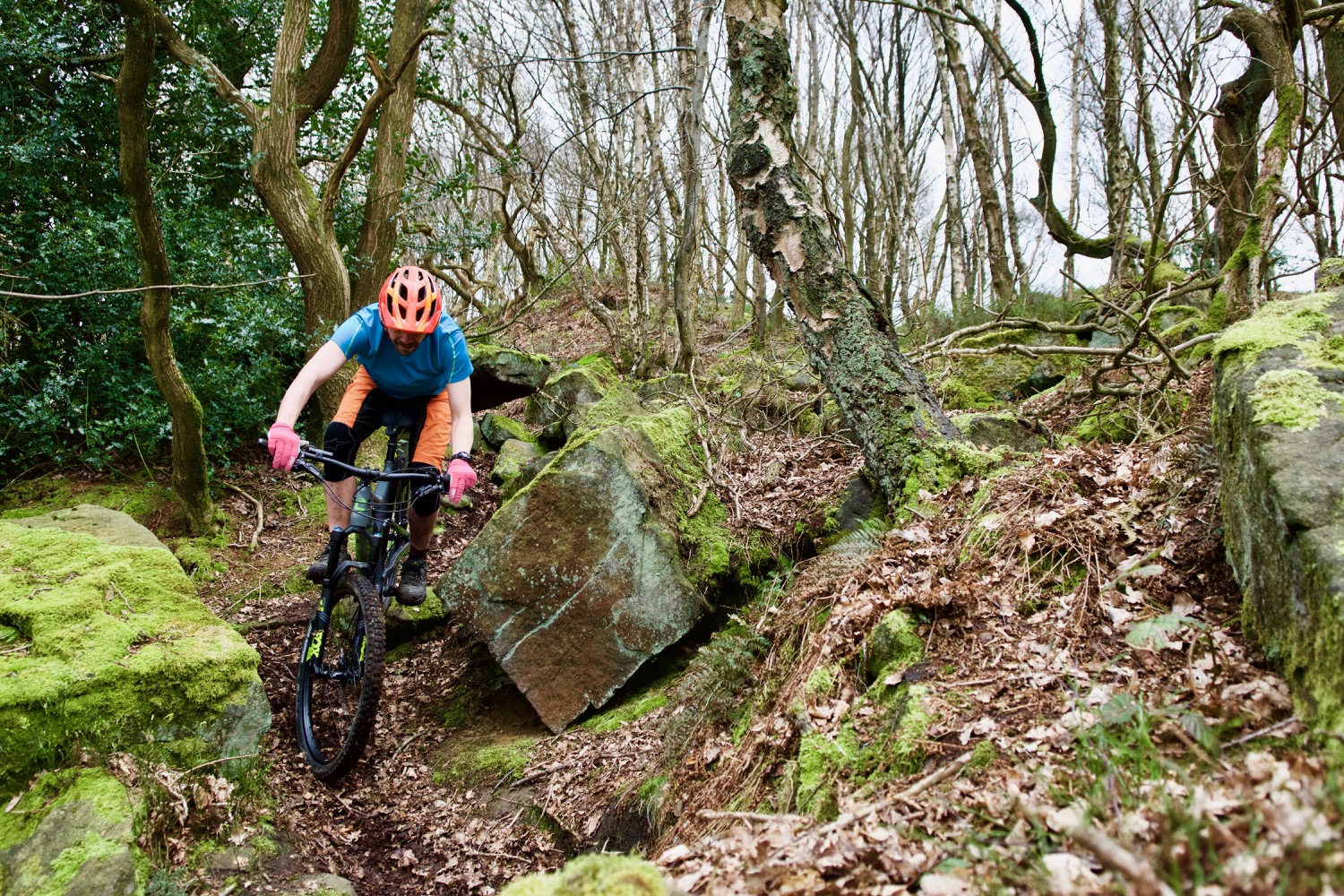
The Bike
This is the Trigger 2, the model one down from the all whistles and bells model, but it still has some pretty nice gear to boast about. First of all, beneath that subtle battleship-grey-with-green-accents paint, there’s a carbon main frame (BallisTec Carbon to be specific), an aluminium Boosted back end and a huge carbon shock linkage, which gives the bike something of the look of the longer travel Jekyll.
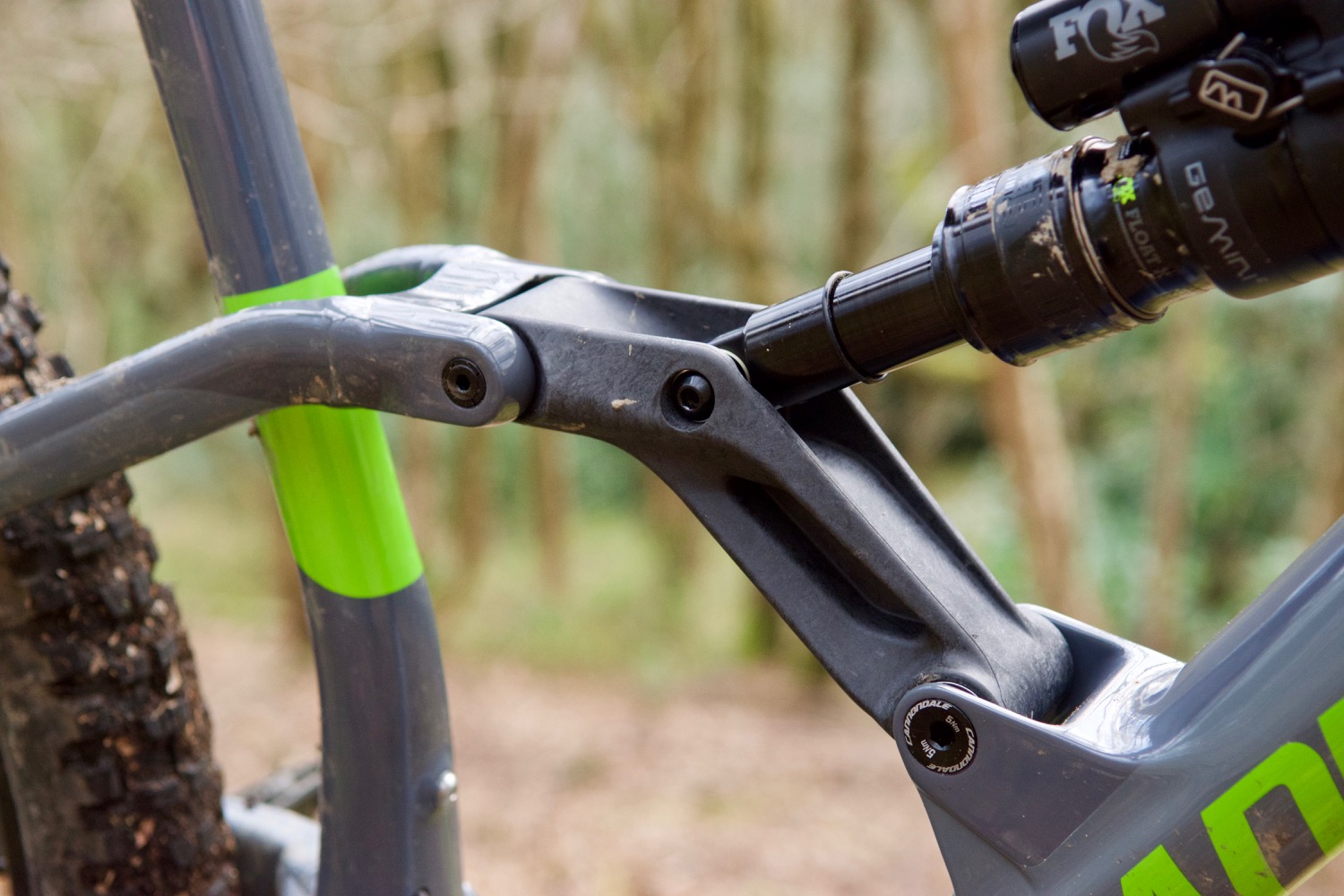
The downtube is impressively vast, and like many bikes has a pronounced bend before it meets the press-fit bottom bracket. This kinked tube means there’s sufficient room inside the main triangle for a 600ml water bottle. This protuberance is protected from rock strikes by a slim carbon guard.
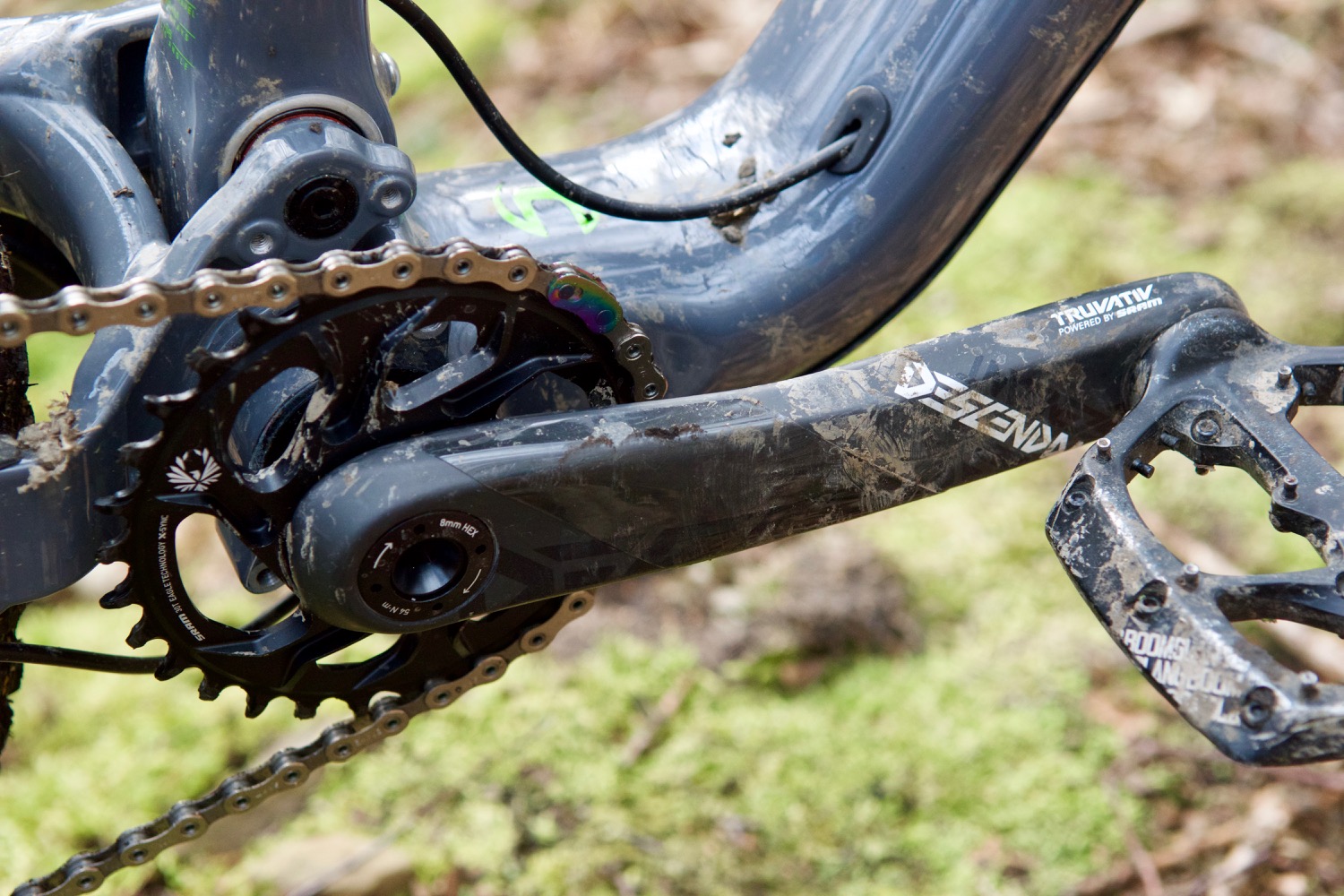
You want numbers? We got numbers… the important ones for the frame are of the modern school (dahlink), without being at the outré end of progressive. There’s a 66° head angle, an effective 74.5° seat angle, 484mm of reach on our XL frame (459mm on the L), which is long-ish, and 420mm seat stays, which should serve to keep the back end tucked in.
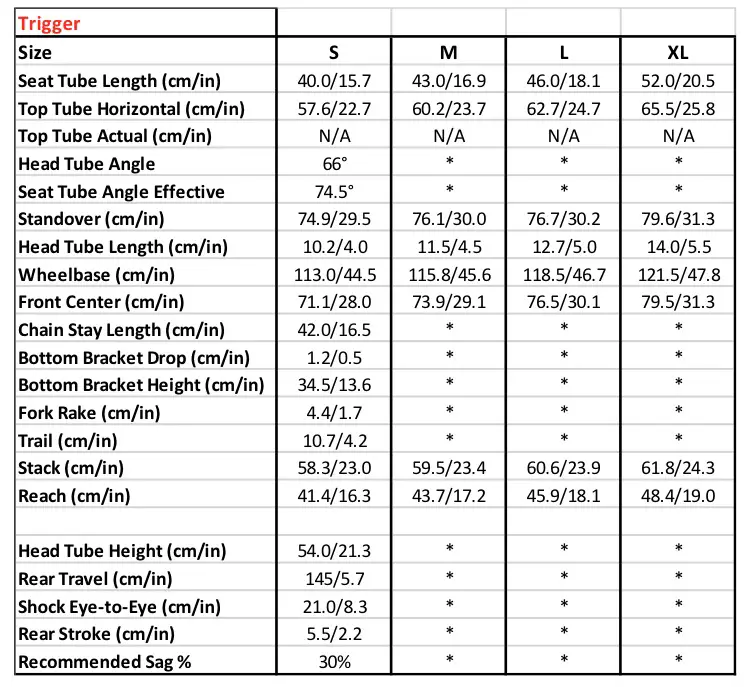
That back wheel is kept on the ground using Cannondale and Fox’s new Gemini shock. This is essentially a regular Fox Float shock (a Float X in the Trigger 2’s case) with a new and spangly collar on it. In the long travel “Flow” setting, the shock acts as a stock Float; it’s relatively linear, and all of those 145mm should be readily on tap. Press the trigger on the handlebar engages the ridiculously named “Hustle” mode.
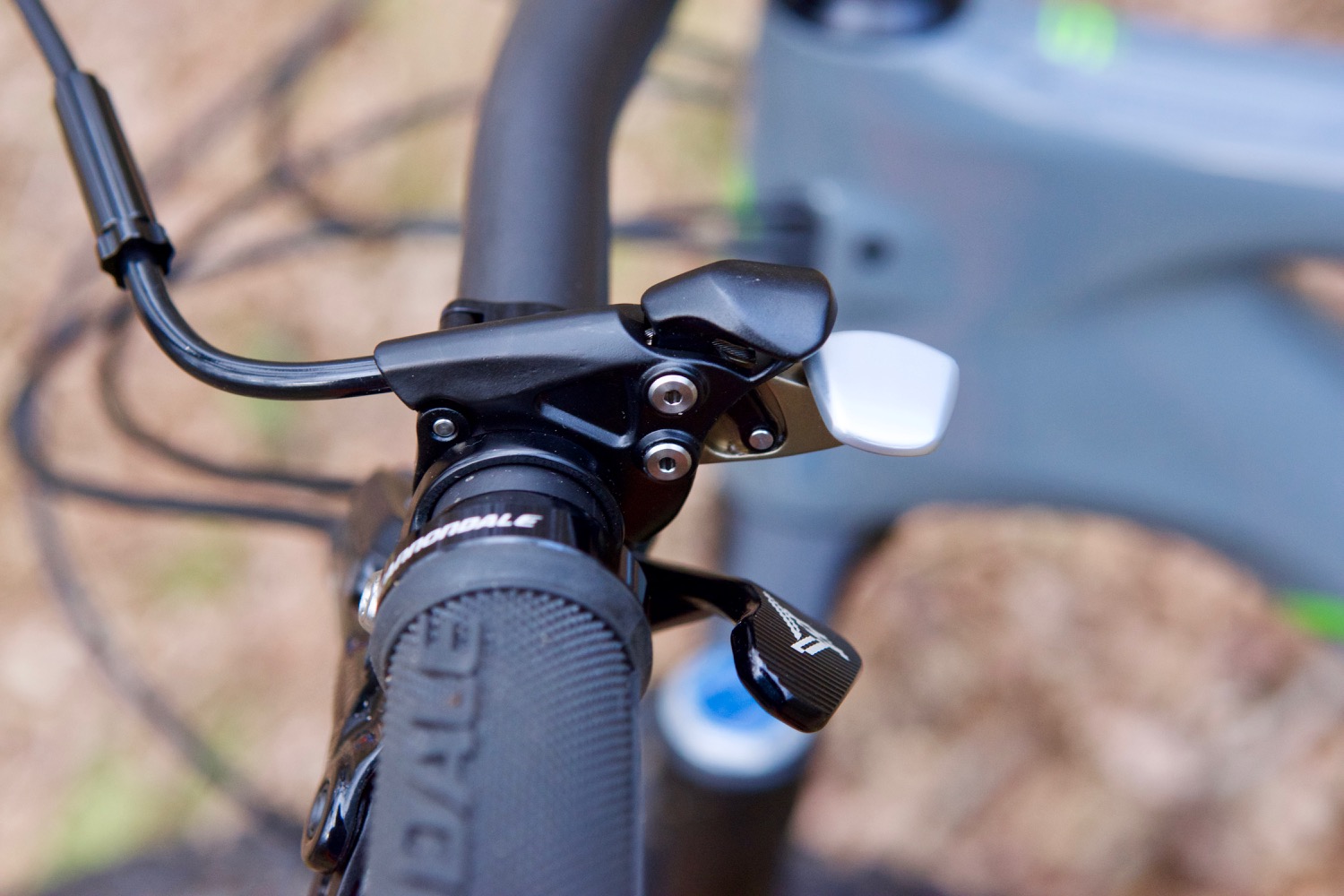
The amount of air in the can is substantially reduced, so the shock ramps up hugely, and this effectively reduces the travel down to 115mm. Because of that rising rate, the shock seems to sit slightly higher up in its travel in this setting too, which Cannondale hopes will make for a bike that climbs efficiently. And given that the basic bones of the unit are not proprietary, servicing should be straightforward.
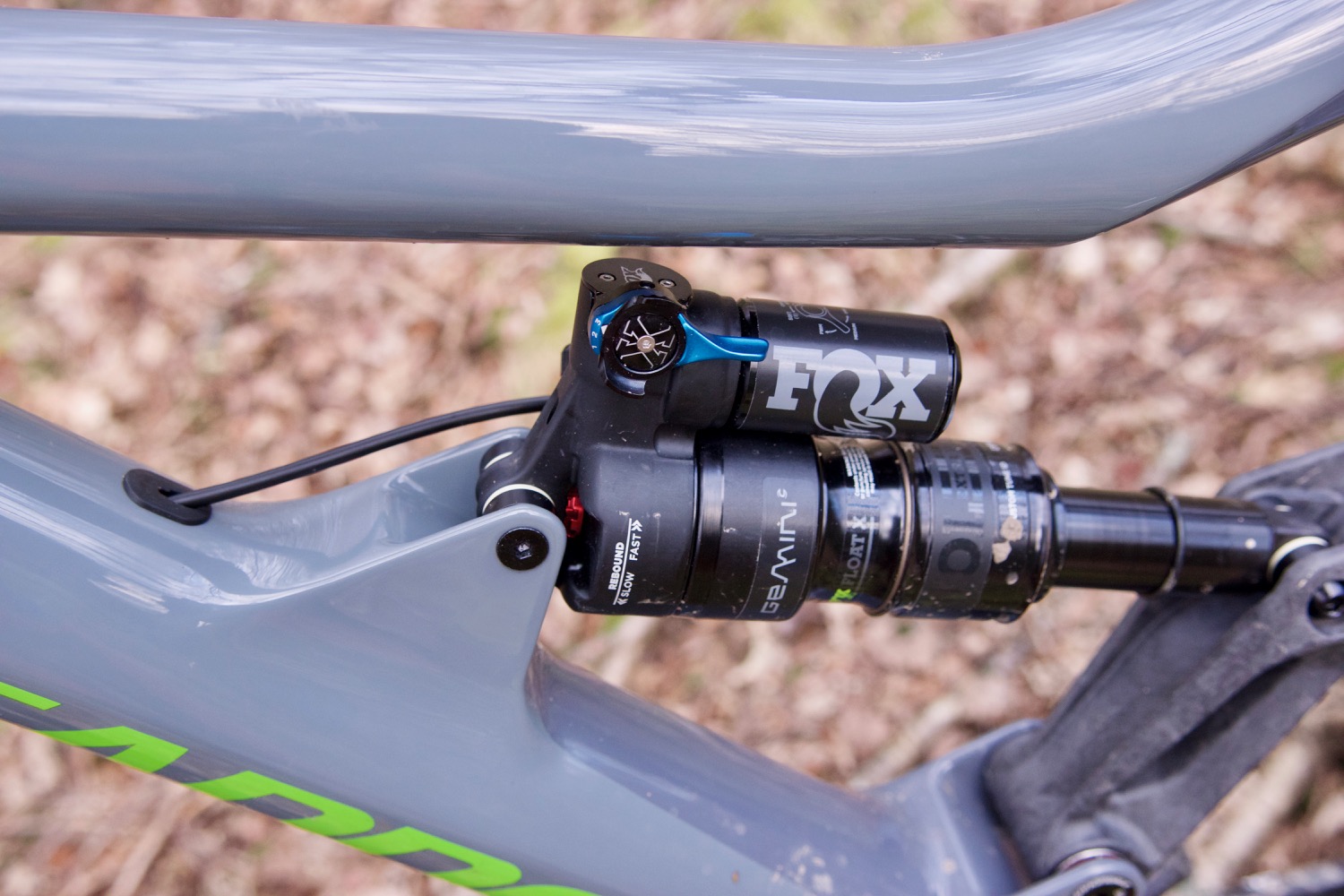
As it happens, the same goes for the fork. No lefty, as good as they are, here. There’s a Boosted Fox Performance Elite 34 150mm fork on front banger duties mated to a 780mm bar via a 45mm stem. It’s looking good, people; it’s looking good.
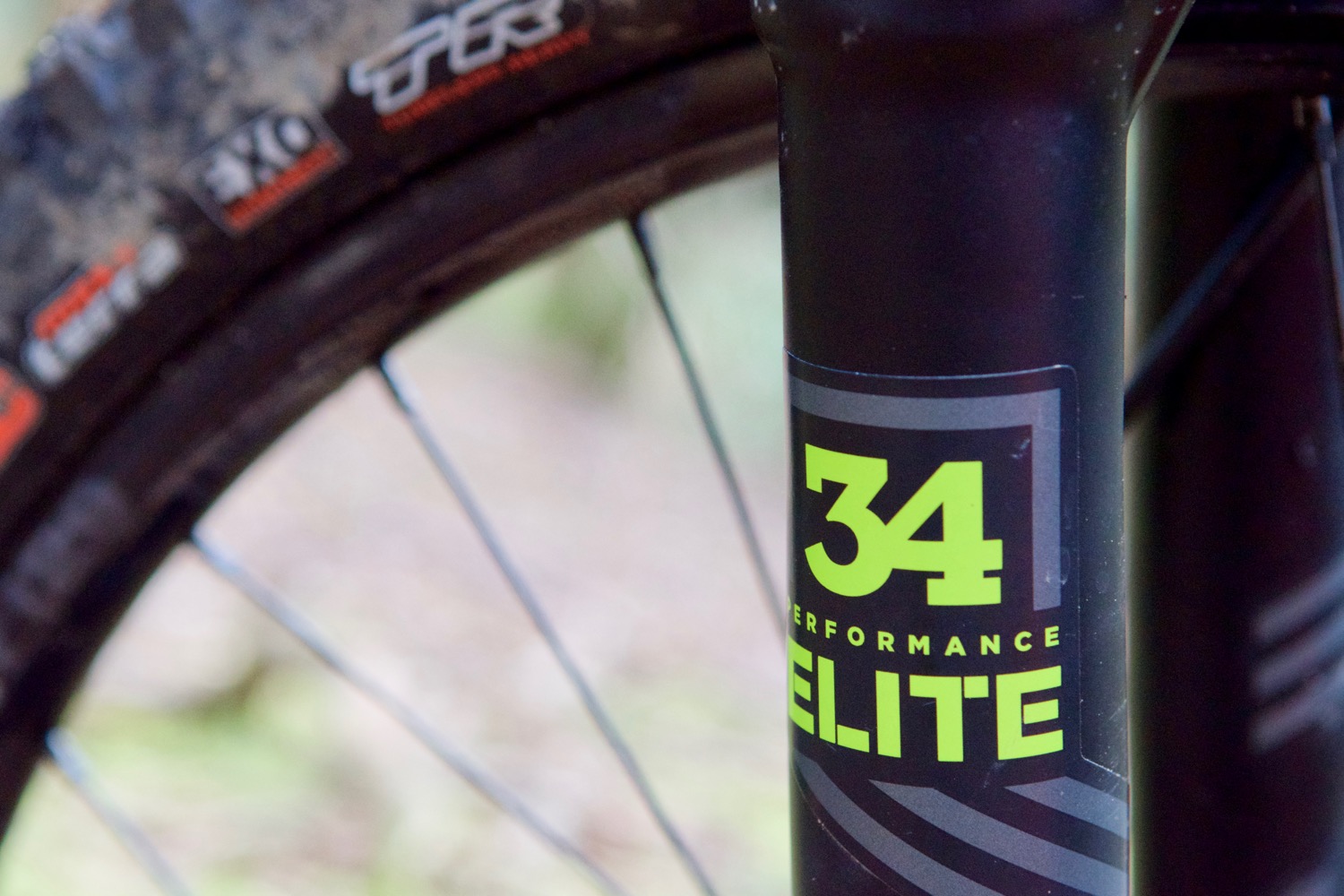
According to the UK branch of CSG, the change in attitude of the new Trigger’s spec. choice is no mistake. Feedback from British mountain bikers has been passed back through to Cannondale, and the Yanks have listened. As such, the 2018 Trigger range is equipped with wide-range 1x drivetrains, big handlebars, wide tubeless rims and proper tough ‘n’ grippy rubber.
Going and stopping is handled by SRAM’s X01 Eagle 12-speed groupset and SRAM’s Guide RS brakes, with 180mm rotors front and rear. There’s a RaceFace dropper post crowned with Fabric’s excellent Scoop saddle, and a wheelset comprising of SRAM 900 hubs laced to WTB Team i29 rims, shod with Maxxis’ excellent 3C Minions front and rear.
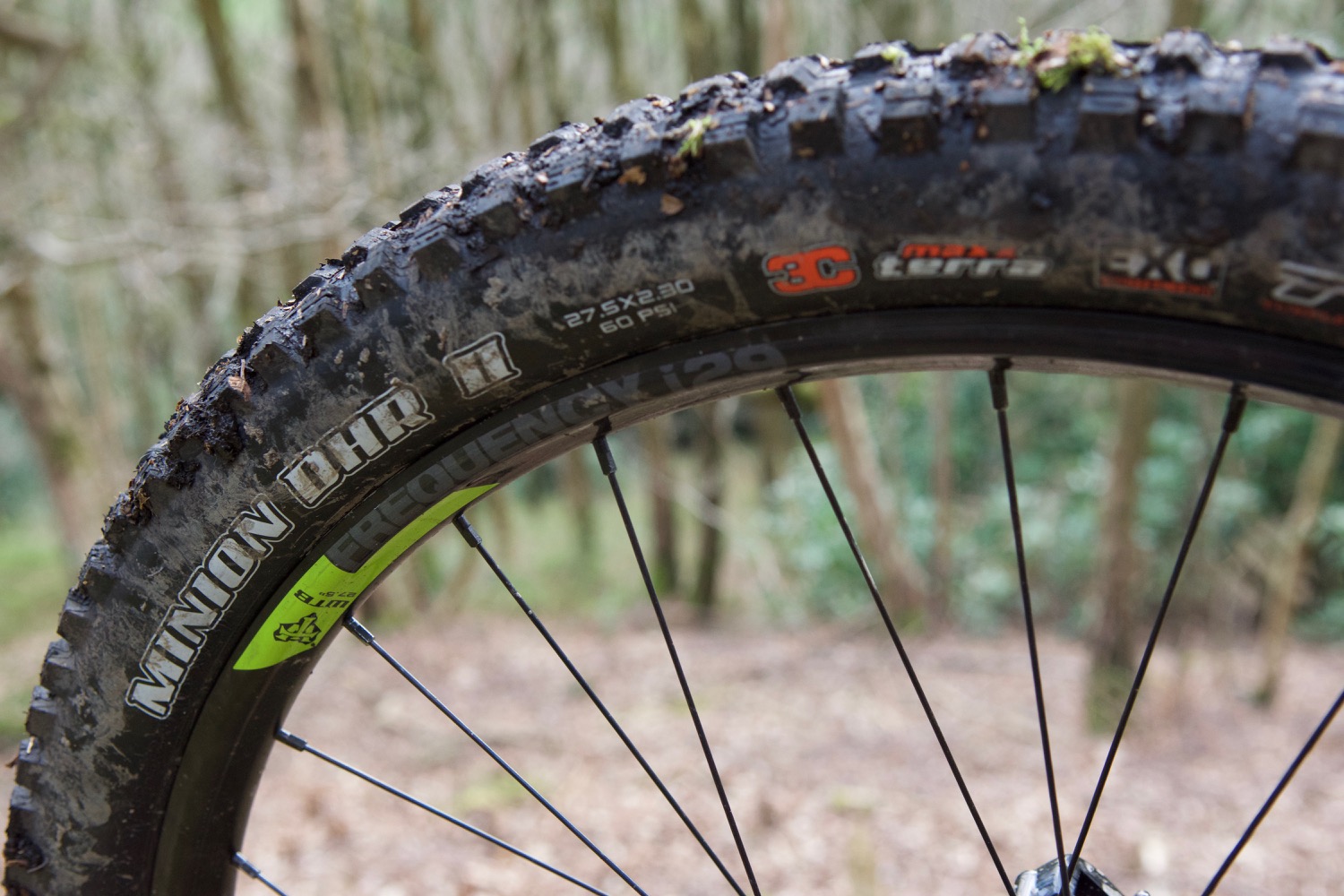
The Ride
But what, I hear you cry, of the ride? Well, it’s impressive. I’ve only had a chance to swing my leg over this XL beastie for a week, but I’ve managed several solid rides in that time on loads of different trails in a variety of weathers, and I’m happy to report that the Trigger comes across beautifully. The shock did take somewhat more fiddling with than expected to get my preferences dialled in (and adjusting the rebound is a particularly annoying process that requires a long skinny allen key), but once I’d done so everything performed well.
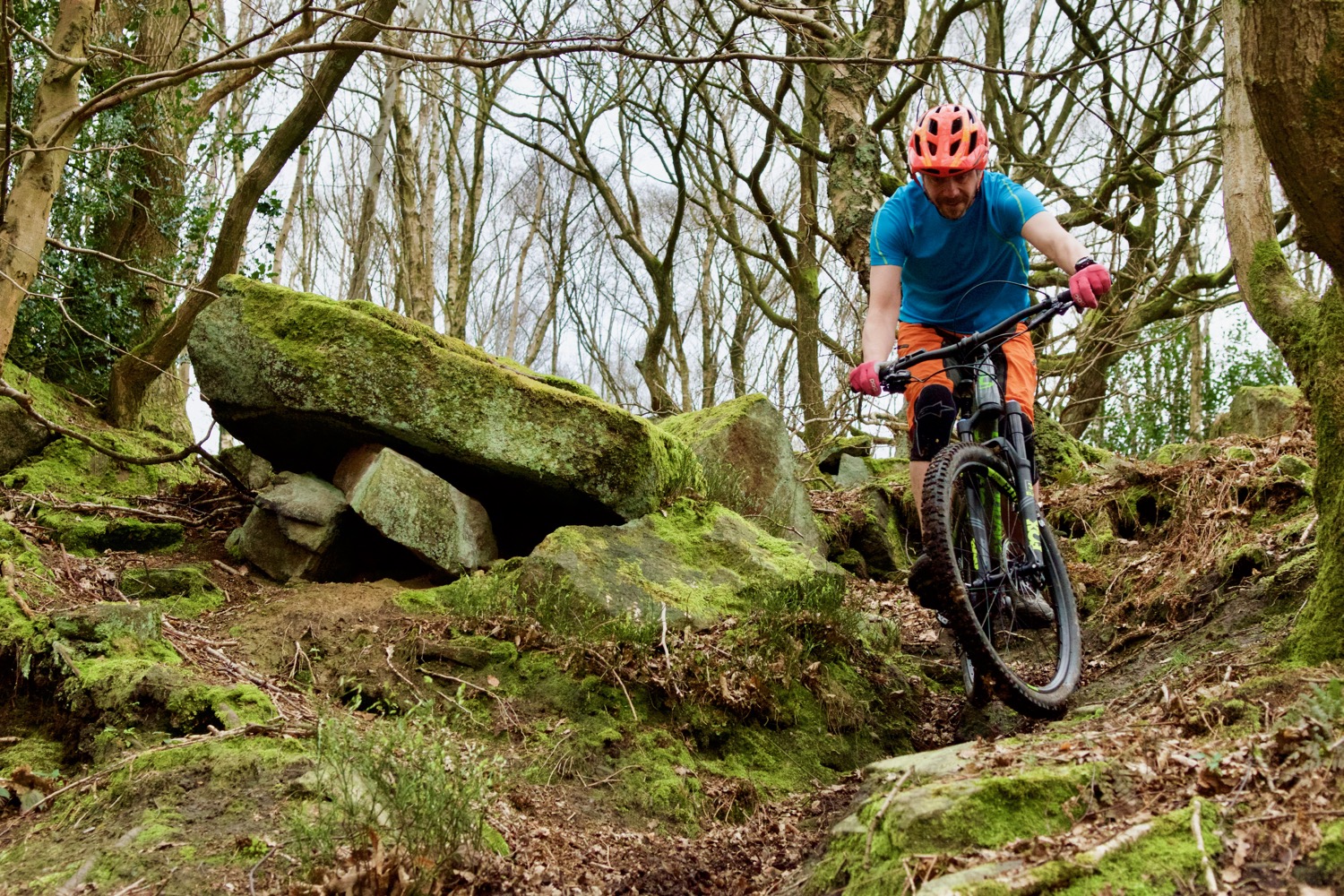
It’s definitely a gnarly trail bike with a climb option rather than the other way around – if you’re looking for an XC bike with longer legs when needed, look elsewhere. The “Hustle” mode works well, don’t get me wrong, and the bike can climb with alacrity, but it definitely feels like what it is – there’s a suppleness to the top of the stroke, which then ramps up massively, and this is noticeable. It’s not a problem at all, I should stress, but it does give the bike a certain feel in that mode, even if it does sit slightly higher in its travel. Perkily so, almost.
The Trigger does gain altitude without fuss (there’s little bob). Technical climbs were helped by the initial suppleness too: there’s more traction on offer that way. Compared to some bikes that use a remote lockout for the shock’s compression damping, the Hustle mode on the Gemini shock remains active in a way that’s actually useful in these off-road climbing scenarios. Though if it’s fire-road grinding you have ahead of you, you can always flick on the blue compression lever and tweak the Gemini as you go.
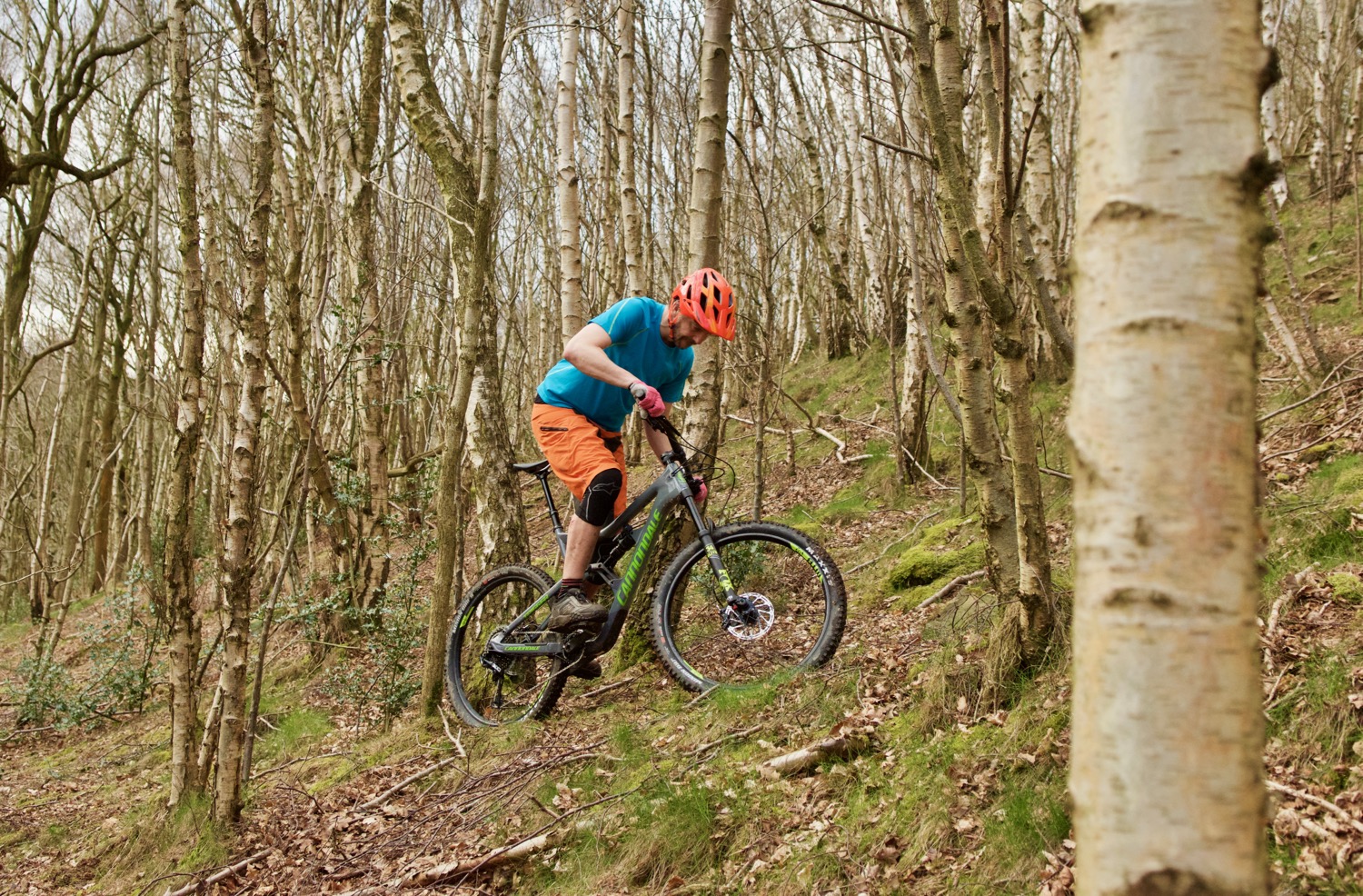
Click the bike into “Flow” mode though, drop the saddle and find something hurtle down, and you’re rewarded with a bike which feels like a very different machine. You sit deeper into it, so it feels slacker, more stable at speed, and very capable in the techy stuff. During the test period, I subjected the Trigger to the best (and occasionally the worst) of Calderdale that I could throw it down, but it didn’t disappoint. You can pick and plant with ease, the small wheels (I usually ride gnarly 29ers) mean you brake earlier and accelerate our of corners slightly faster, and the bike was a hoot to ride.
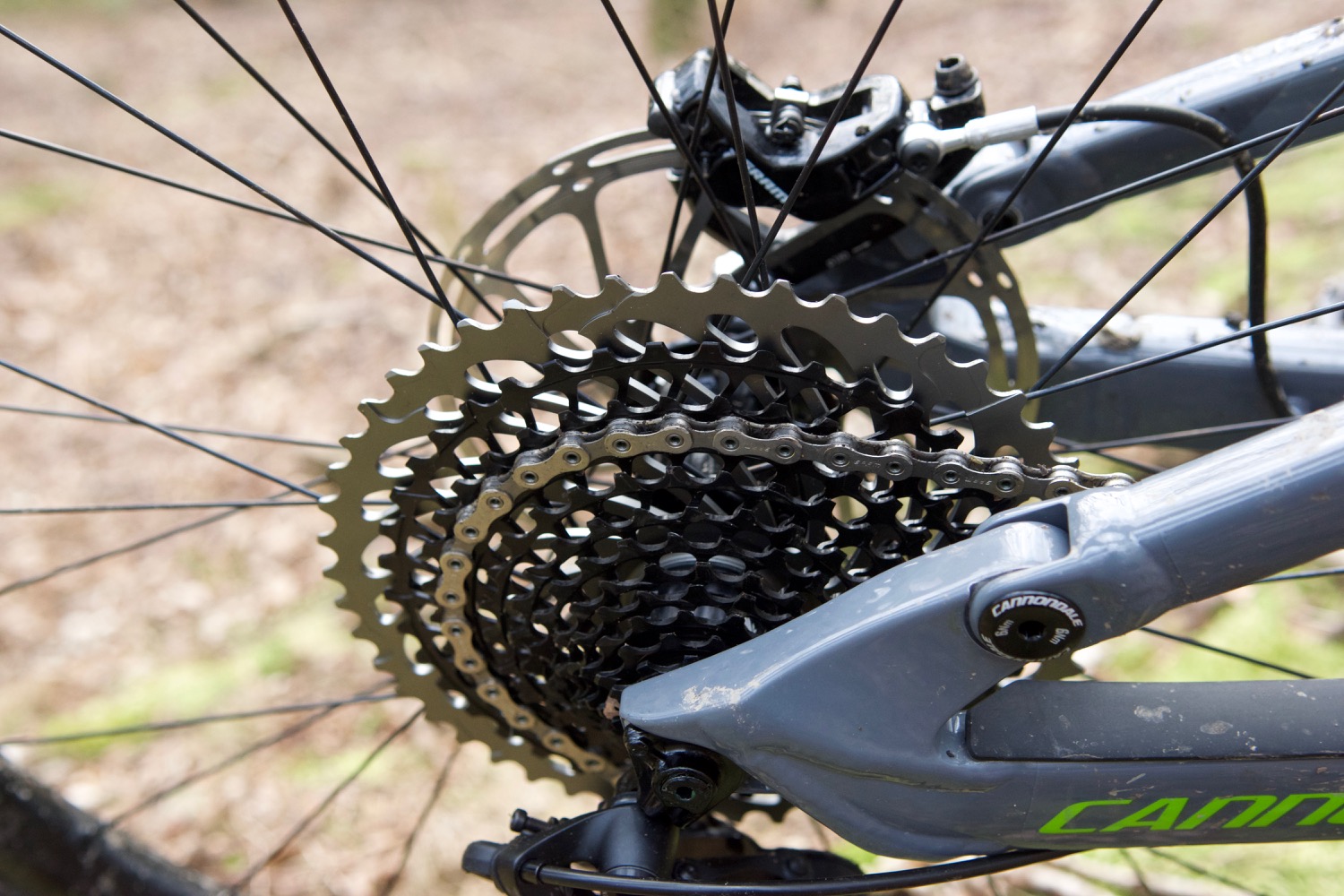
The shock performed beautifully, and mates well with the excellent fork. I love the latest Foxes, and the 34 Performance Elite here was no exception. Supple, controlled, stiff: yum. You can ride the bike off the front and you’ll be richly rewarded; as is often the case with the more capable bikes, I think you need to give the Trigger some beans to get the best out of it, but it’ll encourage you along the way, and it’ll make you a better rider if you do. You can just sit back and enjoy the ride, but I don’t think you’re getting the best out of the bike if you do.
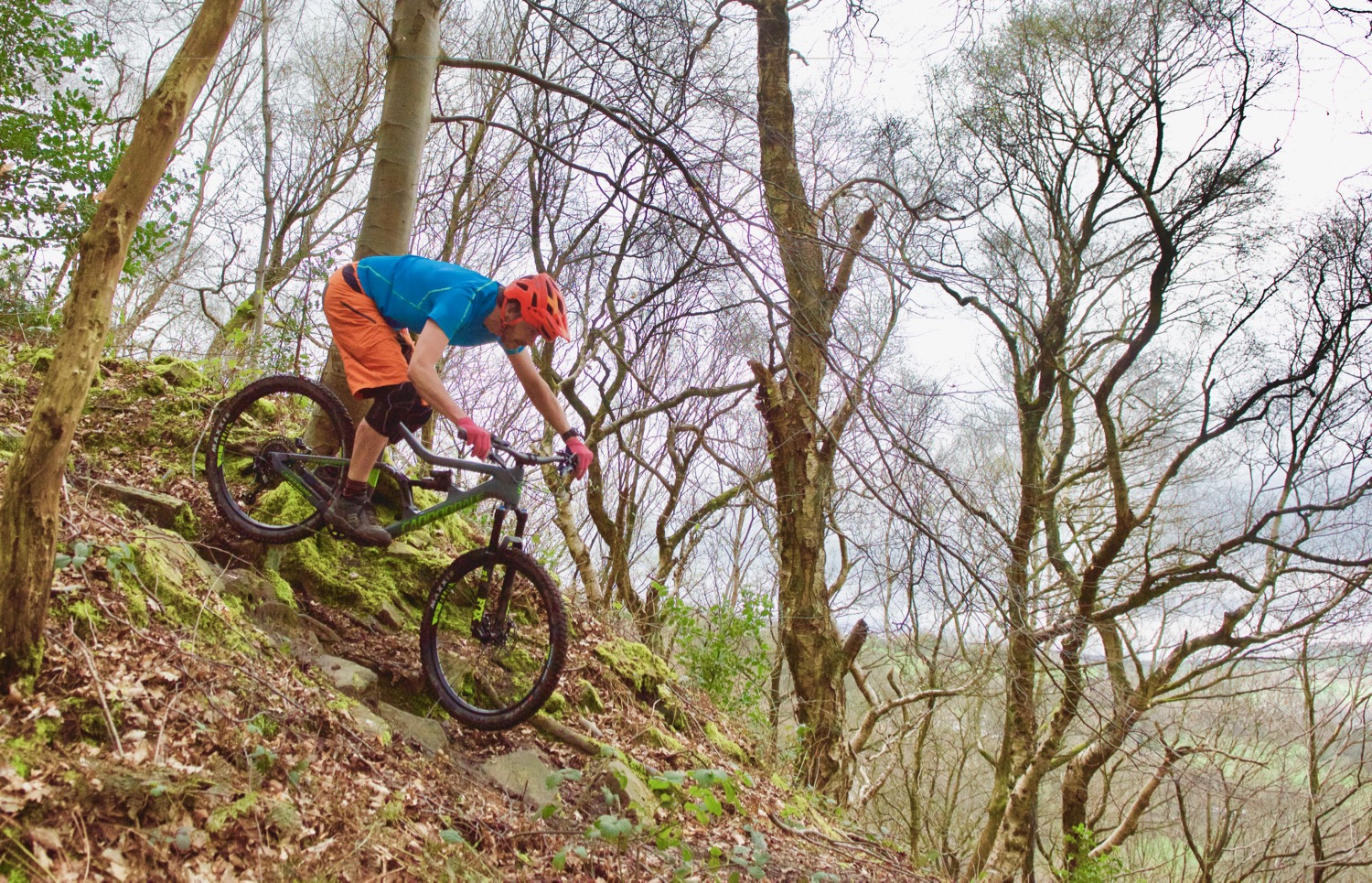
Durability notes
Nothing on the Trigger went pop or creak during our test period, but without a full British winter aboard it, that’s to be exepcted. I can’t honestly tell you that there are obvious places where corners have been cut, though. Everything looks built to last. I have in the past evidenced my distrust of press fit BBs – but in all honest this is one of many in a long line which have given me no problems whatsoever, so my suspicion is diminishing – and they do make for substantially stiffer downtube/BB shell interfaces.
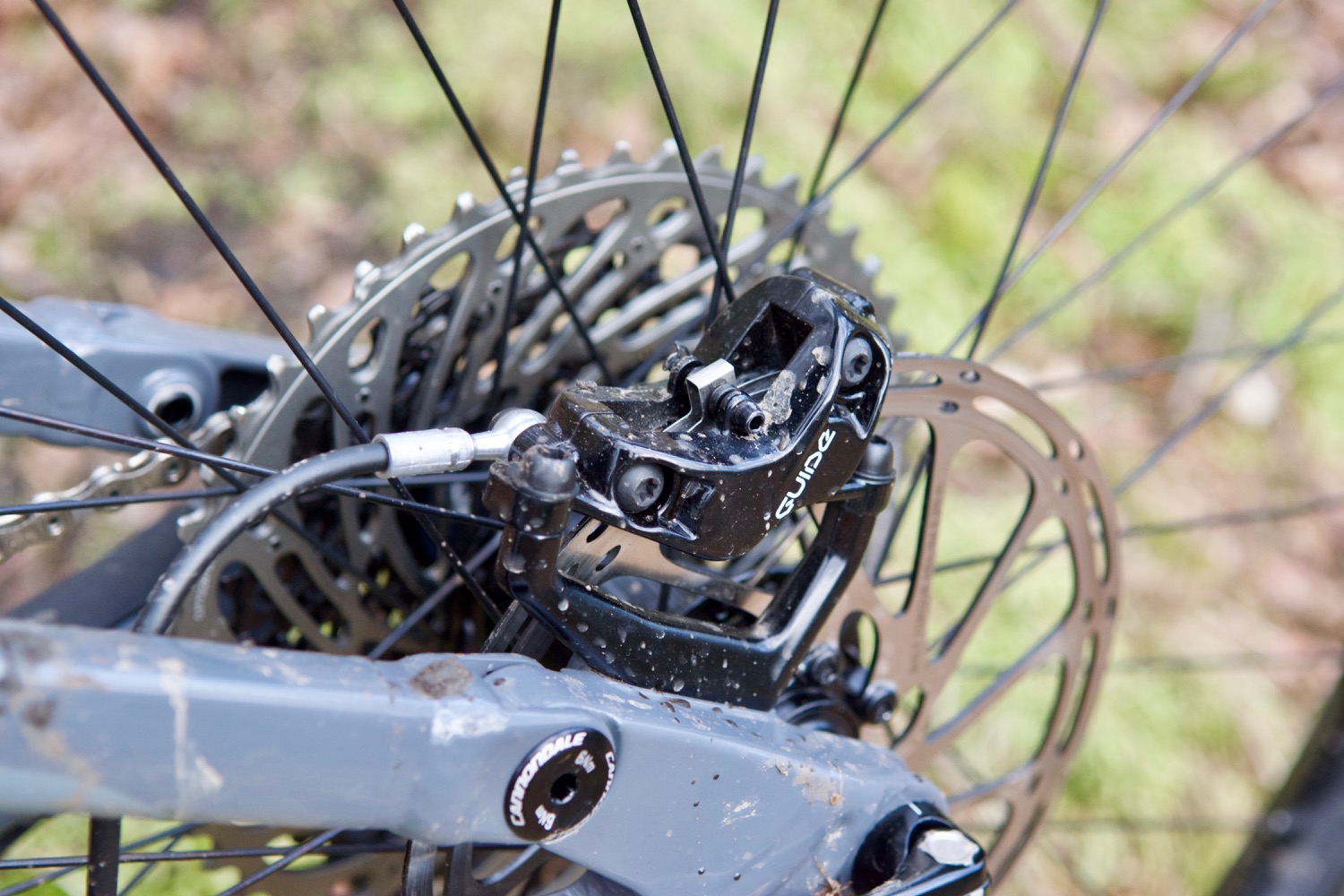
This was also my first play on 12 speed SRAM, and shifting was – as expected – flawless. I miss the multiple upshifts on Shimano shifters, and I have to say that 50t big sprocket seems like monumental overkill in Calderdale (you run out of grip WAY before you run out of puff) but I think I’d probably change my tune after a few long days in the Alps.
Were there any downsides? Minor niggles – I confess I’d like to see a larger rotor on the front, especially on XL bikes, as it’s more likely that people of – ahem – substance will be riding them, but in fairness the Guides held up their end of the bargain pretty well, and stopped me fine. I’d rather have been able to fiddle with shock rebound on the fly instead of needing a long skinny allen key. And that carbon down tube protector didn’t look particularly confidence inspiring. Happily, I didn’t get a chance to test it, and I’m sure the folks at Cannondale know their stuff, but I confess I’d like to see a more substantial one on there, having gouged more than a few burlier looking ones in Yorkshire and the Lakes.

Three things which could be improved:
- Dull and hard to photograph grey colour.
- Skimpy downtube paunch protection.
- Rebound access is – uh – fiddly.
Three things we loved:
- Subtle and understated grey colour.
- Have your cake and eat it climbing and descending performance.
- Less proprietary parts means easier fettling down the line.

Overall
The new Trigger is a huge improvement on the previous iteration, which already had its fans. But this one looks set to add many more devotees to the list. It’s a very fine bike indeed. It’s not a climbing gazelle, but it genuinely surprises with how well it climbs, given how well it also descends.
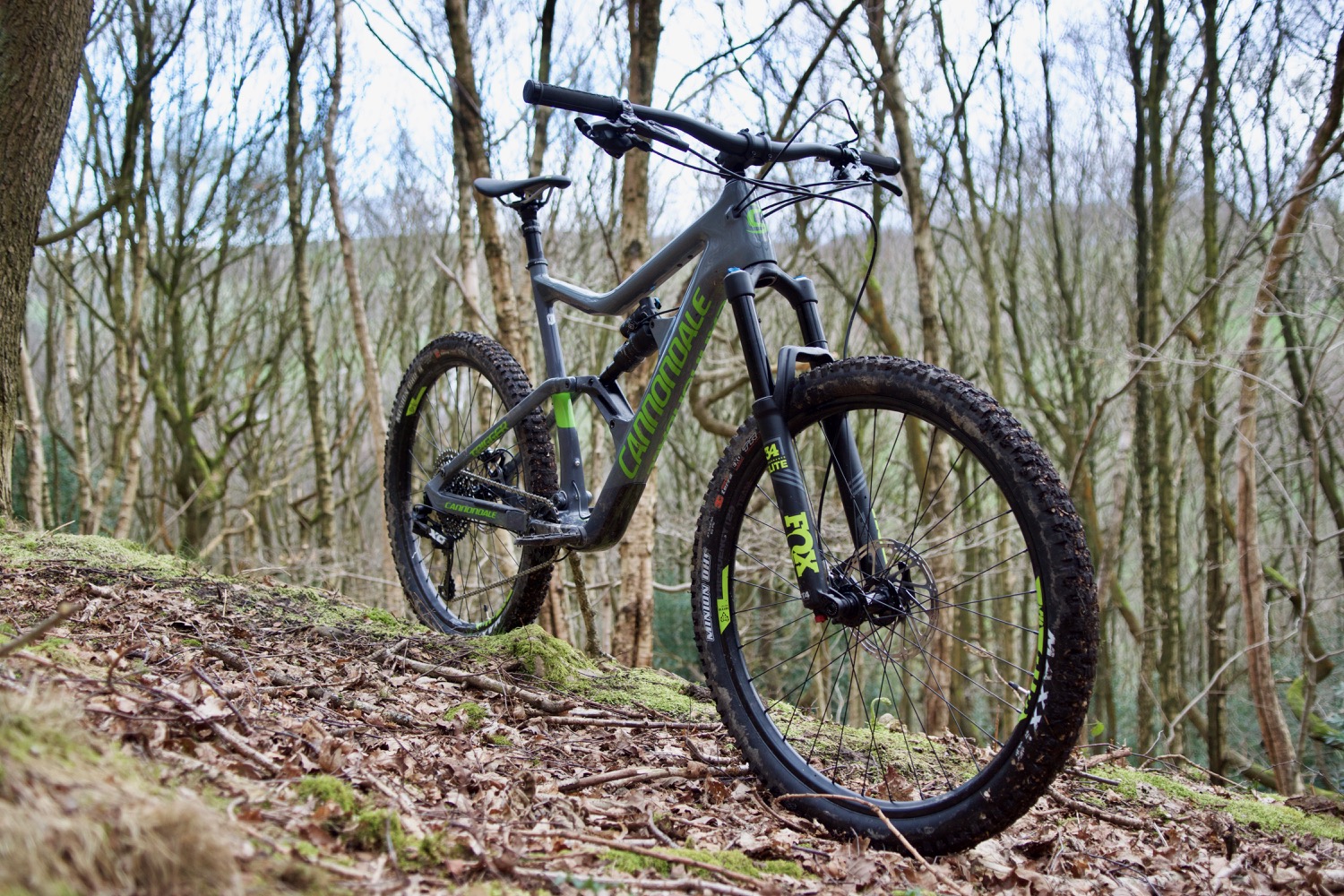
2018 Cannondale Trigger 2 Specifications
- Frame // BallisTec Carbon Fibre Front & SmartFormed Alloy Rear, 115/145mm Travel
- Fork // Fox 34 Float Performance Elite, 150mm Travel
- Shock // Fox Float X Gemini
- Hubs // SRAM 900 148×12/110×15
- Rims // WTB Frequency Team i29
- Tyres // Maxxis Minion DHF 2.3in Front & Minion DHR II 2.3in Rear, EXO, Tubeless Ready, 3C MaxxTerra
- Chainset // Trivativ Descendant 30t
- Front Mech // N/A
- Rear Mech // SRAM Eagle X01
- Shifters // SRAM Eagle X01
- Cassette // SRAM Eagle X01 10-50t
- Brakes // SRAM Guide RS 180mm Front & Rear
- Stem // Cannondale Alloy 45mm Long
- Bars // Cannondale Carbon 780mm Wide
- Grips // Cannondale Lock-On
- Seatpost // RaceFace Turbine 150mm
- Saddle // Fabric Scoop
- Size Tested // XL
- Sizes available // S, M, L, XL
- Weight // 13.66kg (30lbs)






